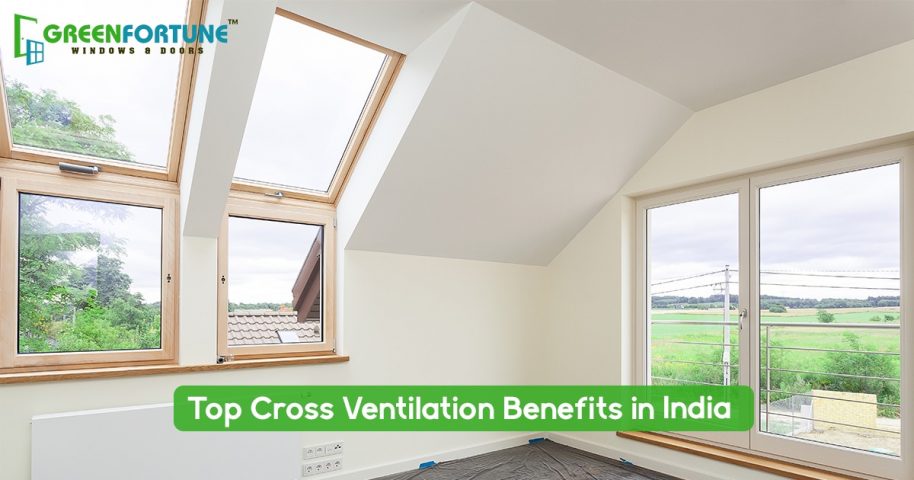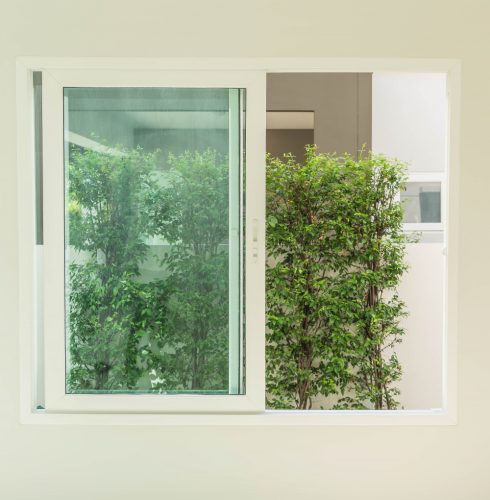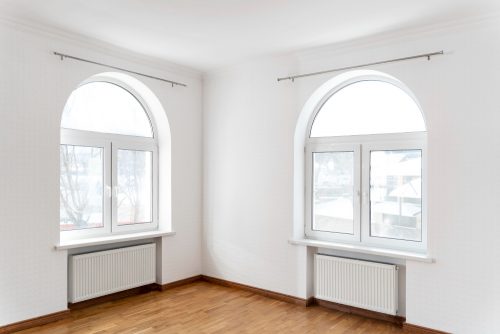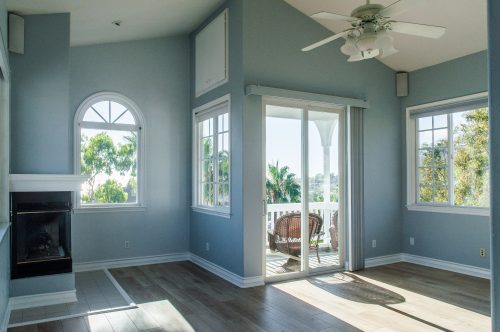
Modern Indoor Hanging Planters That Elevate Your Interiors
October 28, 2025
Double-Pane vs Triple-Pane Windows: Which Offers the Best Energy Savings?
October 30, 2025Have you been facing troubles with congested air in your home? Well, that’s not new. Indian homes are frequently plagued with inadequate air circulation, leading to rooms that become suffocated and the accumulation of trapped heat. It also increases the electricity costs while negatively affecting well-being and living space.
Families looking for solutions that will keep their homes cool yet keep the costs under control have turned towards cross ventilation. Cross ventilation allows fresh air inside while the trapped air escapes, creating ideal living conditions while saving energy efficiently.
9 Benefits of Cross Ventilation in Indian Homes
1. Improved Indoor Air Quality
Cross-ventilation offers one of the most significant advantages, like improved air quality. Stale air, dust, and pollutants often become trapped indoors. This mostly happens particularly in the urban settings with limited space. This results in some individuals' respiratory issues, allergies, or fatigue symptoms.
An adequately designed cross-ventilation window lets air freely pass through to flush away harmful particles from entering and replenish with fresh air from outside. This helps the families, especially the people who spend most of their time at home, to feel more energetic and refreshed when breathing natural air from natural ventilation sources.
2. Reduce Heat and Humidity
India in summer is scorching hot, and homes that lack adequate ventilation quickly become uncomfortable. Cross ventilation enables the hot air to escape while cool air enters to maintain a pleasant indoor temperature without overly relying on cooling or air conditioning units. In addition, cross-ventilation reduces humidity, preventing moisture accumulation that causes dampness, mould growth, and musty odours that often plague monsoon-prone or coastal regions.
3. Energy Savings and Lower Bills
Excessive use of fans and air conditioners causes unnecessary strain on wallets and the environment. One of the key cross-ventilation advantages is energy efficiency when airflow is sufficient enough to keep homes cooler throughout the day without needing cooling devices as much, even during mild summer evenings.
Natural airflow alone provides comforting environments, reducing energy costs and carbon emissions. However, this could save families money and reduce their carbon footprint in the long term.
4. Comfort Through Natural Cooling
Artificial cooling may offer instantaneous comfort, but nothing beats natural air for refreshing experiences. Cross ventilation produces constant air flow throughout the house, creating spaciousness and airiness as fresh air enters each space without needing large cooling devices. It also creates a peaceful, relaxing atmosphere that enhances everyday comfort for all family members.
5. Protect against Dampness and Mould
Homes exposed to heavy rainfall or high humidity are prone to dampness that can harm furniture, walls, and health. Cross ventilation is essential in keeping rooms dry by exchanging humid air for dry air from outside sources.
Well designed windows with cross ventilation help avoid condensation forming on windows and walls, and reduce mould risk, which could otherwise pose respiratory health risks and compromise structural integrity. This benefit of cross ventilation in Indian coastal homes is among its chief advantages.
6. Health and Well-being Benefits
Lack of air circulation can cause headaches, poor concentration, and sleep issues. Cross-ventilation brings fresh air indoors for increased energy and mental clarity.
Families will benefit from lower respiratory infections and less pollutants in their environment, and fresh air improves mood, relieves stress, and creates an atmosphere that fosters positivity. Hence, the benefits of cross-ventilation extend far beyond simple comfort to ensure long-term health.
7. Environmentally Friendly Living
Today, environmental sustainability is highly essential. Relying on artificial cooling to cool a home increases greenhouse gas emissions and consumes energy. Cross-ventilation system offers an environmentally friendly solution to keeping homes comfortable while saving money and reducing environmental impacts.
Homes designed with cross-ventilation foster an environmentally-friendly lifestyle that future generations can take advantage of.
8. Improved Architectural Design
A well-planned cross-ventilation window layout will not only increase airflow, but it can also make homes look more appealing.
Architectural designers often employ large windows with ventilators or open layouts to allow maximum airflow, creating a more spacious appearance while increasing sunlight levels inside.
Natural lighting combined with fresh air reduces artificial lighting needs and air conditioning costs significantly, making your house both energy efficient and visually appealing - ideal features in Indian homes that serve both functional and decorative functions.
9. Long-Term Value for Homes
A quality ventilation system is an investment with long-term returns. Homes equipped with efficient cross-ventilation systems can be more relaxing, energy efficient, and healthier environments, increasing property values as buyers prefer homes equipped with natural cooling systems.
Cross ventilation also guarantees comfort and longevity at lower maintenance costs while protecting structure and residents. It can reduce humidity levels, mould growth, and energy waste, saving structure and occupant health.
Conclusion
Cross-ventilation is one of the easiest and most cost-effective ways to ensure that a home environment that is healthy, comfortable, and environmentally sustainable. Cross-ventilation offers many benefits to both air quality and heating costs, as well as savings in energy consumption, health benefits, and overall well-being.
Indian families can gain the advantages of designing the ideal cross-ventilation window layouts to their advantage, including cooler summers, cleaner air quality, and lower electricity bills, while reducing their impact on the environment. When building or renovating an existing house, considering cross ventilation can make all the difference. Creating a breathable and healthy home will only increase comfort over time.
GreenFortune - Your Premium Solution for uPVC Windows and Doors
GreenFortune is your go-to partner for high-quality uPVC windows and doors designed for energy efficiency. They offer lasting durability, comfort, and modern aesthetics to bring style into any home.
Whether you need replacement windows or are considering new construction, GreenFortune provides customised solutions that ensure exceptional value and long-term client satisfaction.
Choose GreenFortune today for innovative design and unmatched customer service. Get in touch with us now.
FAQs
Q1. What is Cross Ventilation in a House?
Cross ventilation refers to air movement from one part of a dwelling to another through strategically positioned windows and openings, to ensure fresh air circulates within it.
Q2. What are the primary Cross Ventilation Benefits for Indian homes?
Cross-ventilation offers several key advantages for Indian households, including improved air quality, decreased humidity and heat, lower energy bills, increased comfort, and protection from dampness for sustainable living.
Q3. How does cross-ventilation design enhance airflow?
A properly designed window allows air to enter and leave, creating a consistent breeze easily—large windows with ventilators on opposite sides as well as open layouts help circulate air more effectively.
Q4. Why is Cross Ventilation Essential in Indian Summers?
Cross Ventilation Benefits include pushing out hot air and lowering indoor temperatures, decreasing cooling equipment needs while making summer more enjoyable and cost-effective.
Cross Ventilation Benefits








